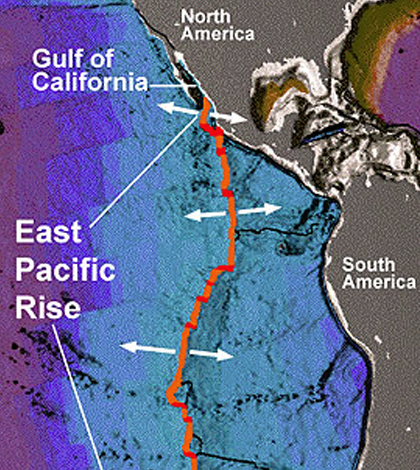Magma From Ocean Ridges Can Impact Extent Of Ice Sheets

The East Pacific Rise is a mountain range under the Pacific Ocean. (Credit: MBARI/NOAA)
The advance and retreat of ice sheets isn’t solely a water-atmosphere phenomenon, according to a release from the University of Connecticut. There are other factors at play, scientists from the university have found.
Using sedimentary records as well as cores taken from the East Pacific Rise, a mountain range located under the Pacific Ocean, UConn researchers have found that magma from beneath the Earth’s crust can play a role in causing oceans to warm and cool.
In describing the activities, scientists lay out how ice sheets throughout the planet’s history have reached far to the south, even hitting the U.S. state of Indiana. When the sheets were that extensive, ocean levels were lower, taking pressure off the ocean ridge. With less pressure, magma underneath could more easily escape to warm the waters above, which would then heat oceans and contribute to ice sheet retreat.
Researchers say their results support the idea that increased magmatic activity in the oceans can reduce the size of ice sheets. The full study is published in the journal Science.
Top image: The East Pacific Rise is a mountain range under the Pacific Ocean. (Credit: MBARI/NOAA)




0 comments